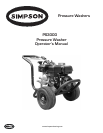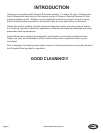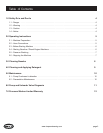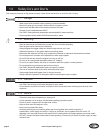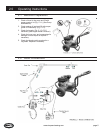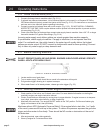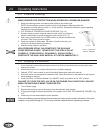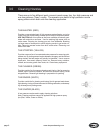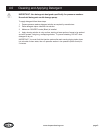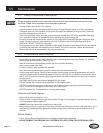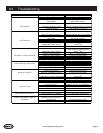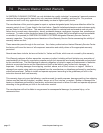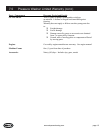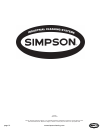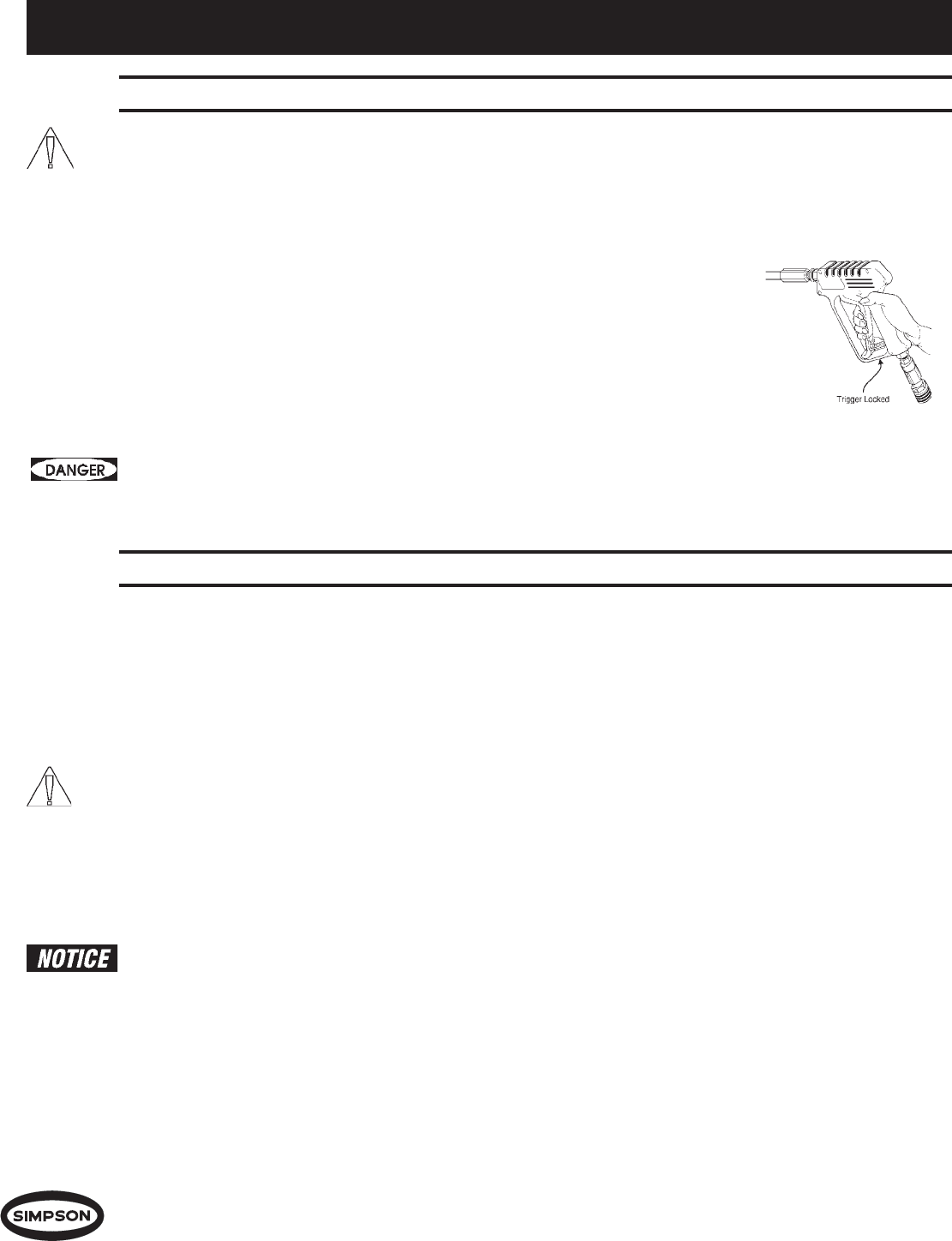
2.0 Operating Instructions
2.5 Pressure Washing
WEAR PROPER FACE PROTECTION WHEN OPERATING A PRESSURE WASHER!
1. Select the cleaning nozzle or accessory best suited for the cleaning job.
NOTE: Some accessory nozzles function as both a high pressure cleaning nozzle and
low pressure chemical injector nozzle (i.e. vari-tip nozzles). See specific accessory nozzle operating
instructions for more information.
2. PUT GUNVALVE TRIGGER IN LOCKED POSITION (Fig. 2.4).
3. Connect cleaning nozzle, chemical injector control nozzle, or accessory
nozzle or attachment to gunvalve extension quick coupler (Fig. 2.2).
4. Push quick coupler sleeve into LOCKED position to prevent accidental loss
of nozzle. Then unlock gunvalve trigger.
5. Check the system for water leaks, fuel leaks, oil leaks, hose kinks, etc.
Correct any problems before proceeding.
6. Machine is now ready for operation.
HIGH PRESSURE SPRAY CAN PENETRATE THE SKIN AND
CAUSE SERIOUS INJURY! NEVER POINT THE SPRAY GUN AT
YOURSELF, OTHER PEOPLE, OR ANIMALS. SHOULD SPRAY
PENETRATE THE SKIN, SEEK MEDICAL ATTENTION IMMEDIATELY!
2.6 Stopping the Machine
1. If you have been using a chemical injector, be sure to flush out the chemical by running clean water
through the system.
2. Allow machine to run for 1 minute without load to cool before stopping.
3. Operate “STOP” lever or switch to shut off machine (See engine instruction manual).
4. Pull recoil starter until compression resistance is felt. Store the machine in this position to help prevent
valve warpage or sticking.
5. Close Fuel Valve. For Electric Models Turn “ON/OFF” switch on machine to the “OFF” position.
FAILURE TO CLOSE THE FUEL VALVE ON THE ENGINE CAN CAUSE FUEL LEAKAGE
WHEN THE MACHINE IS BEING TRANSPORTED!
6. Turn off water supply.
7. Remove the cleaning nozzle or accessory from the extension quick coupler..
8. Pull gunvalve trigger to release all pressure in the system, then LOCK THE GUNVALVE TRIGGER (Fig.
2.4).
9. Hoses may now be disconnected from the machine.
Failure to release pressure before disconnecting the hose quick coupler will result in the quick
coupler o-ring seal blowing out. This o-ring must be replaced before operating machine.
FIG. 2.4 - GUNVALVE
SAFETY TRIGGER
www.simpsoncleaning.com
page 7



